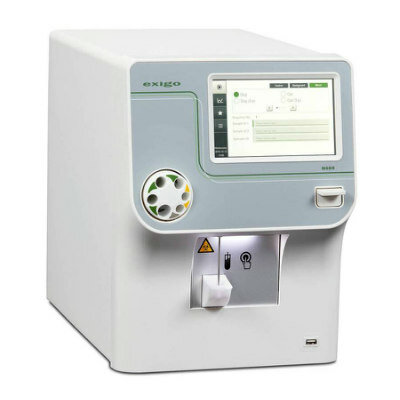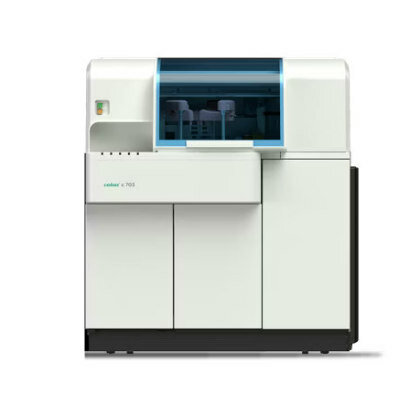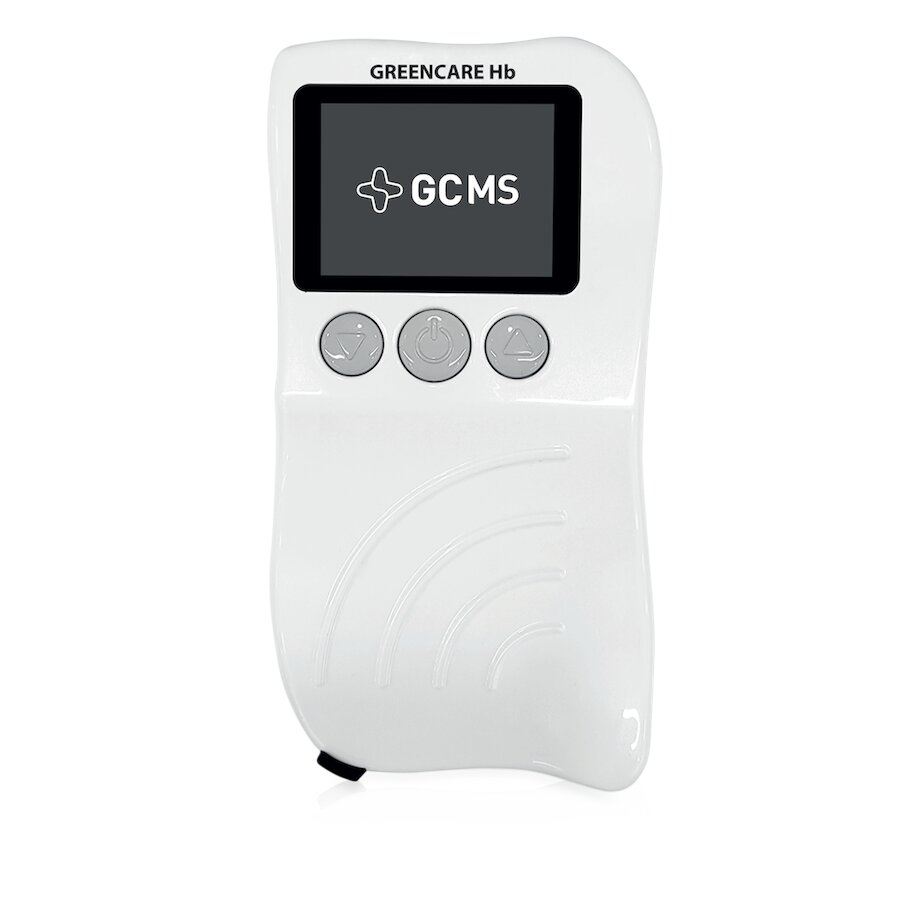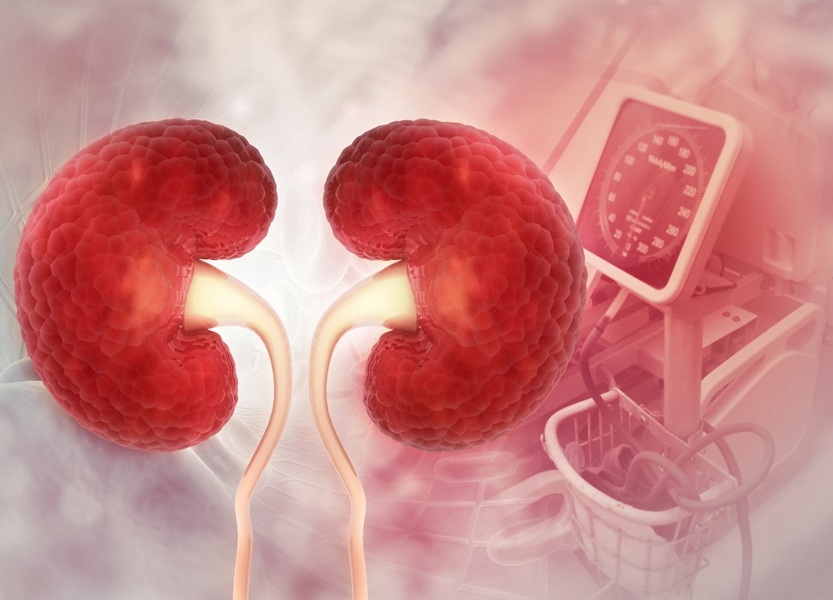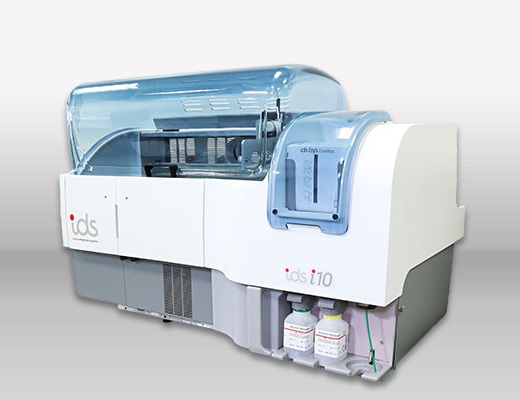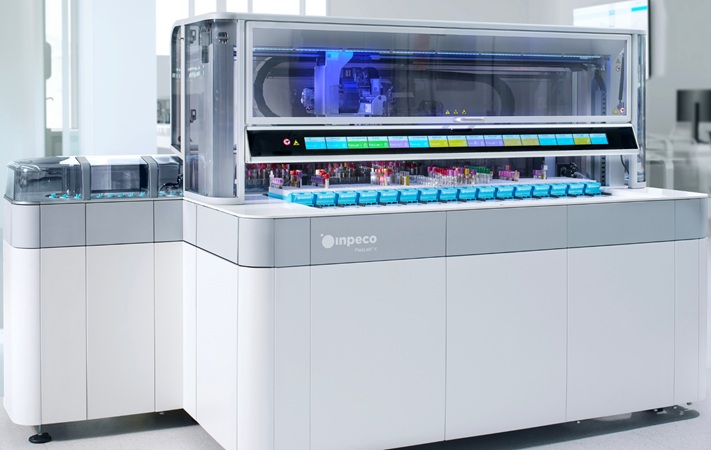Transfusion Protocols Compared After Cardiac Surgery
|
By LabMedica International staff writers Posted on 25 Mar 2015 |
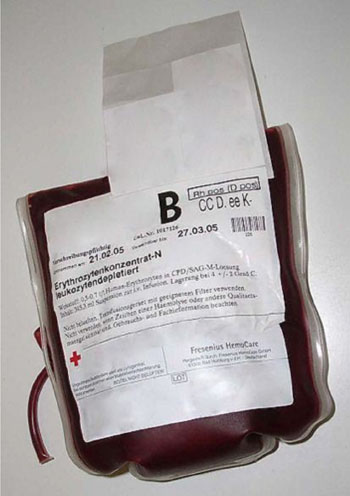
Image: Plastic bag containing 0.5 to 0.7 liters of packed red blood cells in citrate, phosphate, dextrose, and adenine (CPDA) solution (Photo courtesy of Fresenius HemoCare).
Unnecessary blood transfusions may increase healthcare costs both directly, because blood is an increasingly scarce and expensive resource, and indirectly due to the complications associated with transfusion.
Cardiac surgery patients who receive blood transfusions are believed to have more complications such as infections, heart attacks and strokes, and this has led to speculation that avoidance of transfusion will improve clinical outcomes.
A team of scientists led by those at the University of Bristol (UK) and those at Nuffield Department of Population Health (Oxford, UK) recruited patients over 16 years of age undergoing non-emergency cardiac surgery to the clinical trial at 17 UK hospitals. Participants with a hemoglobin (Hb) level of less than 9 g/dL after their operations were randomized to have a transfusion either when they became substantially anemic (transfuse when Hb is “low,” i.e., less than 7.5 g/dL) or straightaway, when they were mildly anemic (transfuse when Hb is “high,” i.e., less than 9 g/dL).
To compare the two transfusion strategies the medical team counted the number of patients who had a serious infection, stroke, heart attack, gut or kidney failure during the first three months after the operation. The trial analyzed information for 2,003 participants, about four times more than the next largest similar trial of low and high thresholds for transfusion in patients having heart surgery.
The scientists found almost all the patients in the “high” group had a blood transfusion (92%) whereas just over half of the patients in the “low” group had a blood transfusion (53%). Slightly more patients had one or more of the serious complications listed above in the “low” group (35%) than the “high” group (33%). Moreover, more patients died in the “low” group (4.2%) than the “high” group (2.6%). This latter finding is clearly very important but it is difficult to interpret because the trial was not primarily designed to compare the difference in the number of deaths. The restrictive threshold was not superior to the liberal threshold with respect to postoperative morbidity or total costs.
Barnaby C Reeves, DPhil, MSc, MFPHM, a professor and lead author of the study, said, “Although only a hypothesis, the suggestion that it might be better rather than worse to transfuse patients who are only mildly anemic goes against the evidence about when to transfuse in non-cardiac surgery settings. Transfusing more rather than fewer patients would create a challenge for hospitals. With an aging population and possibly an increase in heart disease, obesity and diabetes, it can only become more difficult in the future to maintain the national blood supply in the UK and in other developed countries around the world. Our findings emphasize the importance of interventions to reduce blood loss in the first place.” The study was published on March 12, 2015, in the New England Journal of Medicine (NEJM).
Related Links:
University of Bristol
Nuffield Department of Population Health
Cardiac surgery patients who receive blood transfusions are believed to have more complications such as infections, heart attacks and strokes, and this has led to speculation that avoidance of transfusion will improve clinical outcomes.
A team of scientists led by those at the University of Bristol (UK) and those at Nuffield Department of Population Health (Oxford, UK) recruited patients over 16 years of age undergoing non-emergency cardiac surgery to the clinical trial at 17 UK hospitals. Participants with a hemoglobin (Hb) level of less than 9 g/dL after their operations were randomized to have a transfusion either when they became substantially anemic (transfuse when Hb is “low,” i.e., less than 7.5 g/dL) or straightaway, when they were mildly anemic (transfuse when Hb is “high,” i.e., less than 9 g/dL).
To compare the two transfusion strategies the medical team counted the number of patients who had a serious infection, stroke, heart attack, gut or kidney failure during the first three months after the operation. The trial analyzed information for 2,003 participants, about four times more than the next largest similar trial of low and high thresholds for transfusion in patients having heart surgery.
The scientists found almost all the patients in the “high” group had a blood transfusion (92%) whereas just over half of the patients in the “low” group had a blood transfusion (53%). Slightly more patients had one or more of the serious complications listed above in the “low” group (35%) than the “high” group (33%). Moreover, more patients died in the “low” group (4.2%) than the “high” group (2.6%). This latter finding is clearly very important but it is difficult to interpret because the trial was not primarily designed to compare the difference in the number of deaths. The restrictive threshold was not superior to the liberal threshold with respect to postoperative morbidity or total costs.
Barnaby C Reeves, DPhil, MSc, MFPHM, a professor and lead author of the study, said, “Although only a hypothesis, the suggestion that it might be better rather than worse to transfuse patients who are only mildly anemic goes against the evidence about when to transfuse in non-cardiac surgery settings. Transfusing more rather than fewer patients would create a challenge for hospitals. With an aging population and possibly an increase in heart disease, obesity and diabetes, it can only become more difficult in the future to maintain the national blood supply in the UK and in other developed countries around the world. Our findings emphasize the importance of interventions to reduce blood loss in the first place.” The study was published on March 12, 2015, in the New England Journal of Medicine (NEJM).
Related Links:
University of Bristol
Nuffield Department of Population Health
Latest Hematology News
- New Scoring System Predicts Risk of Developing Cancer from Common Blood Disorder
- Non-Invasive Prenatal Test for Fetal RhD Status Demonstrates 100% Accuracy
- WBC Count Could Predict Severity of COVID-19 Symptoms
- New Platelet Counting Technology to Help Labs Prevent Diagnosis Errors
- Streamlined Approach to Testing for Heparin-Induced Thrombocytopenia Improves Diagnostic Accuracy
- POC Hemostasis System Could Help Prevent Maternal Deaths
- New Test Assesses Oxygen Delivering Ability of Red Blood Cells by Measuring Their Shape
- Personalized CBC Testing Could Help Diagnose Early-Stage Diseases in Healthy Individuals
- Non-Invasive Test Solution Determines Fetal RhD Status from Maternal Plasma
- First-Of-Its-Kind Smartphone Technology Noninvasively Measures Blood Hemoglobin Levels at POC

- Next Gen CBC and Sepsis Diagnostic System Targets Faster, Earlier, Easier Results
- Newly Discovered Blood Group System to Help Identify and Treat Rare Patients
- Blood Platelet Score Detects Previously Unmeasured Risk of Heart Attack and Stroke
- Automated Benchtop System to Bring Blood Testing To Anyone, Anywhere
- New Hematology Analyzers Deliver Combined ESR and CBC/DIFF Results in 60 Seconds
- Next Generation Instrument Screens for Hemoglobin Disorders in Newborns
Channels
Clinical Chemistry
view channel
Carbon Nanotubes Help Build Highly Accurate Sensors for Continuous Health Monitoring
Current sensors can measure various health indicators, such as blood glucose levels, in the body. However, there is a need to develop more accurate and sensitive sensor materials that can detect lower... Read more
Paper-Based Device Boosts HIV Test Accuracy from Dried Blood Samples
In regions where access to clinics for routine blood tests presents financial and logistical obstacles, HIV patients are increasingly able to collect and send a drop of blood using paper-based devices... Read moreMolecular Diagnostics
view channel
D-Dimer Testing Can Identify Patients at Higher Risk of Pulmonary Embolism
Pulmonary embolism (PE) is a commonly suspected condition in emergency departments (EDs) and can be life-threatening if not diagnosed correctly. Achieving an accurate diagnosis is vital for providing effective... Read more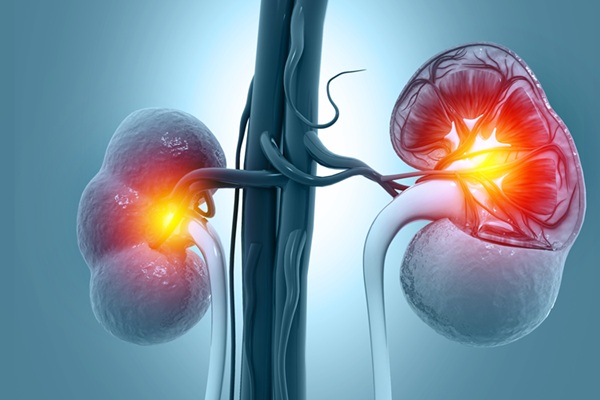
New Biomarkers to Improve Early Detection and Monitoring of Kidney Injury
Drug-induced kidney injury, also known as nephrotoxicity, is a prevalent issue in clinical practice, occurring when specific medications at certain doses cause damage to the kidneys. Nephrotoxicity can... Read moreImmunology
view channel
Post-Treatment Blood Test Could Inform Future Cancer Therapy Decisions
In the ongoing advancement of personalized medicine, a new study has provided evidence supporting the use of a tool that detects cancer-derived molecules in the blood of lung cancer patients years after... Read more
Cerebrospinal Fluid Test Predicts Dangerous Side Effect of Cancer Treatment
In recent years, cancer immunotherapy has emerged as a promising approach where the patient's immune system is harnessed to fight cancer. One form of immunotherapy, called CAR-T-cell therapy, involves... Read more
New Test Measures Preterm Infant Immunity Using Only Two Drops of Blood
Preterm infants are particularly vulnerable due to their organs still undergoing development, which can lead to difficulties in breathing, eating, and regulating body temperature. This is especially true... Read more
Simple Blood Test Could Help Choose Better Treatments for Patients with Recurrent Endometrial Cancer
Endometrial cancer, which develops in the lining of the uterus, is the most prevalent gynecologic cancer in the United States, affecting over 66,000 women annually. Projections indicate that in 2025, around... Read moreMicrobiology
view channel
Breakthrough Diagnostic Technology Identifies Bacterial Infections with Almost 100% Accuracy within Three Hours
Rapid and precise identification of pathogenic microbes in patient samples is essential for the effective treatment of acute infectious diseases, such as sepsis. The fluorescence in situ hybridization... Read more
Innovative ID/AST System to Help Diagnose Infectious Diseases and Combat AMR
Each year, 11 million people across the world die of sepsis out of which 1.3 million deaths are due to antibiotic-resistant bacteria. The burden of antimicrobial resistance (AMR) continues to weigh heavily,... Read more
Gastrointestinal Panel Delivers Rapid Detection of Five Common Bacterial Pathogens for Outpatient Use
Acute infectious gastroenteritis results in approximately 179 million cases each year in the United States, leading to a significant number of outpatient visits and hospitalizations. To address this, a... Read morePathology
view channel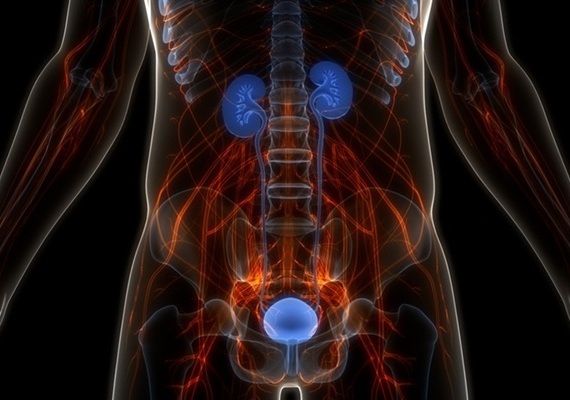
AI Model Predicts Patient Response to Bladder Cancer Treatment
Each year in the United States, around 81,000 new cases of bladder cancer are diagnosed, leading to approximately 17,000 deaths annually. Muscle-invasive bladder cancer (MIBC) is a severe form of bladder... Read more
New Laser-Based Method to Accelerate Cancer Diagnosis
Researchers have developed a method to improve cancer diagnostics and other diseases. Collagen, a key structural protein, plays various roles in cell activity. A novel multidisciplinary study published... Read more
New AI Model Predicts Gene Variants’ Effects on Specific Diseases
In recent years, artificial intelligence (AI) has greatly enhanced our ability to identify a vast number of genetic variants in increasingly larger populations. However, up to half of these variants are... Read more
Powerful AI Tool Diagnoses Coeliac Disease from Biopsy Images with Over 97% Accuracy
Coeliac disease is an autoimmune disorder triggered by the consumption of gluten, causing symptoms such as stomach cramps, diarrhea, skin rashes, weight loss, fatigue, and anemia. Due to the wide variation... Read moreTechnology
view channel
Smartphones Could Diagnose Diseases Using Infrared Scans
Rapid advancements in technology may soon make it possible for individuals to bypass invasive medical procedures by simply uploading a screenshot of their lab results from their phone directly to their doctor.... Read more
Novel Sensor Technology to Enable Early Diagnoses of Metabolic and Cardiovascular Disorders
Metabolites are critical compounds that fuel life's essential functions, playing a key role in producing energy, regulating cellular activities, and maintaining the balance of bodily systems.... Read more
3D Printing Breakthrough Enables Large Scale Development of Tiny Microfluidic Devices
Microfluidic devices are diagnostic systems capable of analyzing small volumes of materials with precision and speed. These devices are used in a variety of applications, including cancer cell analysis,... Read moreIndustry
view channel




